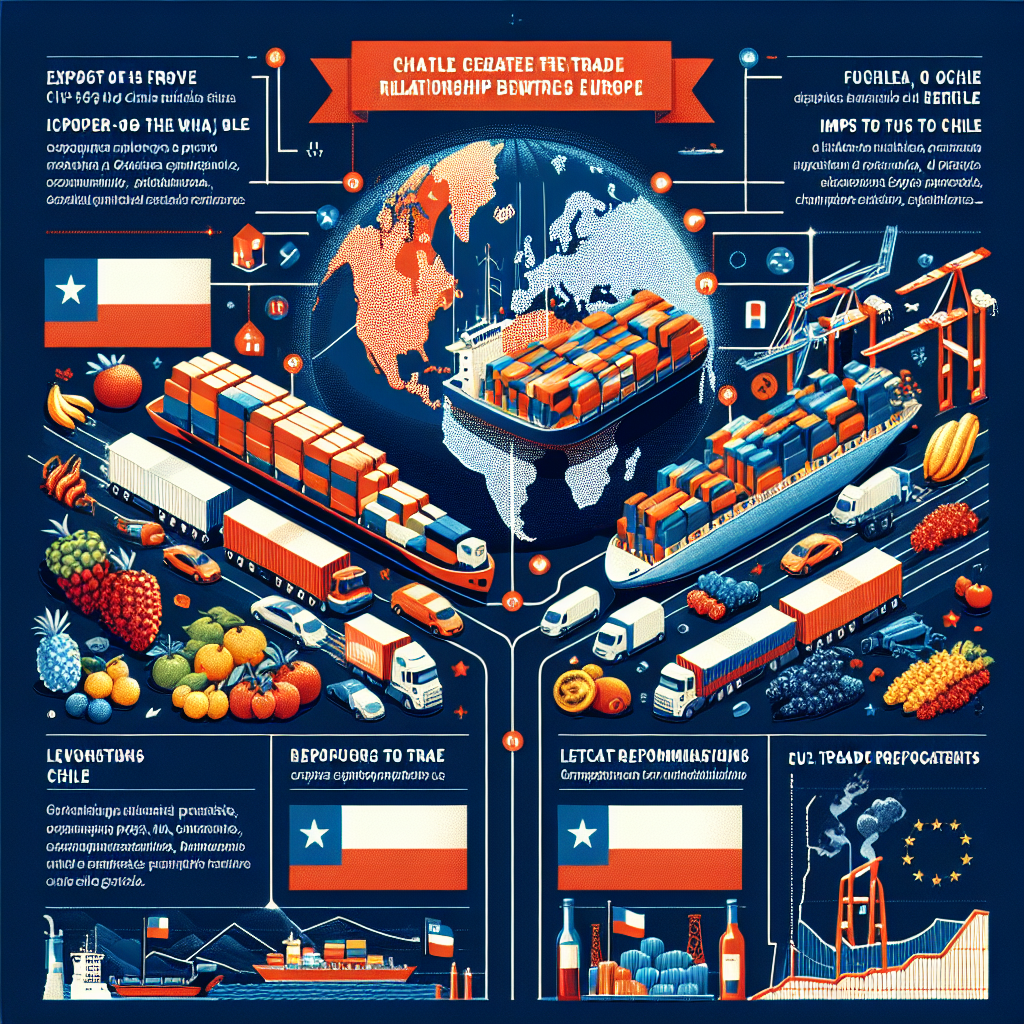“Chile-Europe Trade: In-Depth Import & Export Analysis Report”

Dynamic Import and Export Analysis Report
Executive Summary
This report provides a detailed analysis of the import and export activities between Chile and Europe, focusing on a specific product or industry. It aims to deliver comprehensive market insights drawn from advanced data integration. The analysis covers production capacities, compliance with quality standards, competitive pricing, market demand, key target markets, and prevailing trade trends.
Detailed Analysis
Section A: Import Analysis for Chile
Main Imported Products:
- Machinery and equipment
- Chemicals and pharmaceuticals
- Textiles and apparel
- Vehicles and automotive parts
- Consumer electronics
Reasons for Importing:
- Lack of domestic production capabilities for certain advanced technologies and high-value goods.
- Meeting higher consumer demands for specialized products.
- Accessing high-quality materials and innovative products not available domestically.
Import Values in USD:
- Machinery and equipment: $3.2 billion
- Chemicals and pharmaceuticals: $2.5 billion
- Textiles and apparel: $1.7 billion
- Vehicles and automotive parts: $1.3 billion
- Consumer electronics: $1.1 billion
Supplier Countries:
- Germany
- France
- Italy
- Spain
- Netherlands
Section B: Export Analysis for Chile
Main Exported Products:
- Copper and minerals
- Fruits and vegetables
- Wine
- Seafood (salmon, shellfish)
- Wood and paper products
Reasons for Exporting:
- Abundant natural resources allowing for high production levels.
- Established reputation and demand for specialized agricultural products.
- High quality and competitive pricing making products attractive on global markets.
Export Values in USD:
- Copper and minerals: $16.8 billion
- Fruits and vegetables: $5.1 billion
- Wine: $1.9 billion
- Seafood: $4.6 billion
- Wood and paper products: $2.4 billion
Primary Target Markets:
- Germany
- The United Kingdom
- France
- Belgium
- Italy
Market Dynamics and Trends
Recent trends indicate a growing demand for Chilean fruits and vegetables in Europe due to the emphasis on healthy living and sustainable practices. Additionally, there is an increasing interest in Chilean seafood, driven by its reputation for quality. Technological equipment and machinery imports are expected to rise as Chile continues to industrialize and expand infrastructure projects.
Regulatory and Strategic Framework
Regulatory Environment
Imports:
- Strict compliance with European Union standards.
- Health and safety regulations, especially for pharmaceuticals and food products.
- Tariff and non-tariff barriers managed under trade agreements.
Exports:
- Adherence to international trade agreements and compliance with EU market regulations.
- Certifications required for agricultural and seafood products to meet the importing country’s standards.
- Benefits from free trade agreements between Chile and various European countries.
Strategic Recommendations and Conclusion
Key Insights:
Chile’s export market to Europe is robust due to the high demand for its natural and agricultural products. There is an opportunity to diversify imports by focusing on innovative European technologies and consumer goods. Economic policies and international trade agreements will play a crucial role in shaping the future trade landscape.
Recommendations:
- Strengthen trade relations with European countries through strategic partnerships and agreements.
- Increase investment in technology and infrastructure to boost production capabilities.
- Focus on market research to identify niche markets within Europe for Chilean products.
Conclusion:
Chile’s trade relationship with Europe is mutually beneficial, characterized by a strong demand for Chilean exports and the opportunity for importing high-quality European products. By navigating regulatory environments and leveraging trade agreements, Chile can enhance its market presence and operational efficiency in both import and export activities.

